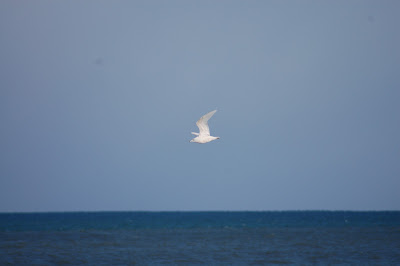At the age of 18 I decided that Aberdeen Uni was the one for me – it was on the east coast, and perhaps more important, it was a suitable distance from home, and it would have me. In preparation for the big move north I spent endless hours looking through the regional round-ups that were (and perhaps still are?) a regular feature in ‘Birdwatching’ magazine. A few themes arose…there were lots of geese and gulls, and king eiders put in frequent appearances. Another name kept cropping up as well though – Girdle ness – and handily for me it was within walking distance of town.
I don’t recall my first trip there, but there are a few memories that linger from the early years. I recall one May morning birding in a shirt and tie and without bins (it was after a very heavy night…) with a cup of tea in a polystyrene cup. My companion gave me the requisite amount of grief but then forgave me as I pointed out a quail running up along a dry stone wall – his first and my only ever patch record. I also remember stumbling over a Richards pipit while trying to twitch a desert wheatear about a week too late…
My visits back then were relatively few and far between, and it wasn’t till about 2006 that I started to really work the ness as a local patch. As the place is mostly not much more than a golf course it’s difficult to assess how populations of birds have changed. Whitethroats and sedge warblers certainly seem more numerous than they were, and stonechats, done in by successive severe winters, have declined from 3+ pairs to 2 records in the last 3 years. House martins have colonized recently, and buzzard, as with everywhere else in the east of the country, have become more numerous.
Winter has it's attractions. The odd king eider turns up, as does the odd white winged gull. Hard weather sometimes forces interesting bits and pieces into Nigg bay (bullfinch is always what I'm hoping for at this time of year) and if there's nothing else around, picking out colour rings and leg flags on the purple sandpipers passes the time nicely.
The biggest change has come in Nigg bay. Gone is the short cropped grass that used to flood and attract little stints and curlew sandpipers, but the cover planted up around the sewage works is now substantial enough to hold breeding chiffchaffs, willow warblers, and reed buntings. Having these breeding birds certainly gives the area more to enjoy in the summer, but the location of Girdle ness means that migrants and seabirds are it’s main focus.
It’s not a massive area but there are plenty of discreet little bits of cover (and one massive bit, around the sewage works in Nigg bay), making it quite a task to work it properly in good conditions. There’s no point in going into the details of what birds can be found – we all know what makes the east coast exciting, so I’ll just detail one of my happier memories.
The Brunnich’s guillemot of 2007 was great, but how I wish I’d found it. I did claim second prize a few days later though. Seawatching from the forghorn with some guille twitchers travelled up from Norfolk. In among a heavy passage of little auks and long-tailed ducks, we had sooties and poms, flocks of snow buntings bombing north, 3 glaucous gulls, and ‘all 4’ species of diver including a cracking adult white-billed. Patch birding at its best!
Girdle ness has a very unofficial list of about 232 species. Of those, I’ve seen 187. Not too bad but I reckon I’ll top 200 in 2015.
Now that’ll be a hangover…







Can't believe you never mentioned my woodlark in the allotments? FFS! 1st for norf-east scotland it was. And only me & nobby saw it! Probly flew over your flat when we booted it as well! Happy days!
ReplyDelete